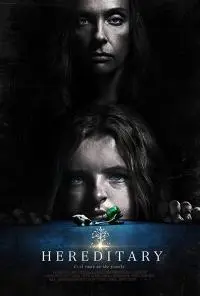So, you know the horror film—a quiet, dark house or maybe a creepy barn, with a full moon outside. The last final girl is walking towards the basement or the loft or the cornfield when all of a sudden—BAM. A cat jumps in the window. Something tips over. An animal runs out of the pile of hay. It’s a jump scare, and it works, but there’s no depth to this horror. It’s a moment, and it will not linger. In order to get depth, in order for that reveal to mean something—whether it’s horror or fantasy or a thriller or science fiction—you need to build up to this. Let me explain my concept of “adding up to ten” in a couple of ways.
PIECES IN A PUZZLE
One way to look at your storytelling is like putting together a huge puzzle. If you never saw the lid—and didn’t know it was a field of flowers or a cloudy sky or a deep sea illumination—it would take you a while to figure that out. Each piece you put into its rightful place adds to the picture. A bit of white here is a fence. A chunk of yellow here is hay. A patch of red is the side of a barn. In time, those will add up to this pastoral scene—cows and pigs and horses and that red barn. But if you just have one piece, you might think it’s all pigs, or the pink is a Cadillac, or the blue is water, not a sky.
BREAD CRUMBS
Another way to look at it is as a trail of bread crumbs that leads you deep into the woods (and maybe if you’re lucky, back OUT of this haunted forest), where bit by bit, little by little, you are taken down a path. Maybe these crumbs were dropped by a witch, with a house made of candy, and it’s leading you to this special meal (and your demise). Maybe you are the one leaving the crumbs, as you go deeper into the maze of corn, so you can run from the minotaur later, when you finally do the thing you set out to do. It is a path you follow, and the deeper you get, the more you see and understand.
THAT MATH
 So, adding up to ten. What the hell are you talking about, Richard? Instead of shouting TEN, instead of a LEAPING CAT, instead of THE COSMIC HORROR, why not build up to that moment, bit by bit, one detail after another, adding up to something horrible or wondrous or cursed or magical?
So, adding up to ten. What the hell are you talking about, Richard? Instead of shouting TEN, instead of a LEAPING CAT, instead of THE COSMIC HORROR, why not build up to that moment, bit by bit, one detail after another, adding up to something horrible or wondrous or cursed or magical?
If TEN is your dead son at the window, if TEN is the gasping zombie with the open mouth pointing its finger at you, if TEN is the end of the world, let’s work our way UP TO TEN, instead of just shouting it. Yelling that the house is haunted, screaming the woods are scary, bleating about the demon in the basement doesn’t make it horrifying. Saying it doesn’t make it true.
Here is that math, where each number is a clue, a hint, a bit of a reveal, a detail. The lower the number (1) the smaller the item or stakes. The higher the number (10) the bigger the moment or revelation. Don’t yell TEN, instead give us:
1 + 1 + 2 + 1 + 1 + 1 + 3 = 10
If this were a novel, it might be adding up to 100. A film might be 1,000.
So what do I mean when I give you these numbers? I'll share an example. Let’s talk about one of my favorite horror films, Hereditary (spoilers WILL be coming). Though you can certainly apply this to any story or book or film or show. I’m not going to add up to ten here, this is a film (which probably adds up to 100 or 1,000) but I’ll give you some numbers for scale.
Small numbers might be:
1 = The death of the grandmother, and the weird funeral
1 = The emergence of the symbol—on Annie’s necklace, and elsewhere
1 = The clucking noise Charlie makes
1 = The support group and the lying members
2 = The models of houses
2 = The shadows and echo of the dead grandmother
5 = Peter being covered in ants
5 = Peter seeing his reflection in a glass pane, and it’s different
5 = Peter breaking his nose on the desk
20 = Charlie getting decapitated
20 = The father burning alive
20 = Annie cutting off her own head
20 = The death of Peter
50 = The final ceremony, the reveal of Paimon, Charlie’s spirit entering Peter’s body
TIMING
What we want is for the reader to play along, for them to not be able to solve the mystery of the story you are telling until you want them to. And that’s usually somewhere around the climax, the reversal, the resolution (and change), and the denouement. If they add up to 10 in the first half of your story, it’s too soon. They saw it coming, they knew the twist, they figured it all out. But we also don’t want to come out of left field, to pull a deus ex machina, to have the audience say, “What the hell?” at the end, with no paragraphs or scenes to support what happens. It’s a balance. We want to pull them along, lure them in, bit by bit, step by step. By itself a rabbit is just a rabbit. But if it’s a magical rabbit, now we’re curious. And if that rabbit keeps coming back, if we keep eating it, YIPPEE! But if the rabbit turns out to be something else (you know what I’m talking about here) then it changes everything. And if the consequences of that truth end up breaking a person, wounding a child, fracturing a person for the rest of their life, what’s the true horror there? The rabbit? The cannibalism? Or the damage done by a father to his son?
EXECUTION
Take a look at your WIP, your next story, and find ways to sprinkle in the pixie dust, to lead a path of stale bread crumbs into the basement or forest or cave. Give us part of the picture, and then a bit more, until it slowly starts to come into focus. Wait, that can’t be true, can it? There are no monsters, it’s the army after all? The deal with the devil will end up erasing your existence? This is the 1000th monkey, and now man has actually evolved? The sum has to be larger than the parts. Done correctly adding up to ten isn’t just ten—it’s bigger than that, it’s amplified, it has grown exponentially so that realization, that truth, that horror is no longer ten, it’s 100, it’s 1,000 it’s a million. Blow our minds—but earn that ending. Earn it in the setting and the character and the senses and the clues—one at a time, chosen carefully, and shown on the page. It takes practice, but when you do it right? That ending will sing.
Get Hereditary at Amazon

About the author
Richard Thomas is the award-winning author of seven books: three novels—Disintegration and Breaker (Penguin Random House Alibi), as well as Transubstantiate (Otherworld Publications); three short story collections—Staring into the Abyss (Kraken Press), Herniated Roots (Snubnose Press), and Tribulations (Cemetery Dance); and one novella in The Soul Standard (Dzanc Books). With over 140 stories published, his credits include The Best Horror of the Year (Volume Eleven), Cemetery Dance (twice), Behold!: Oddities, Curiosities and Undefinable Wonders (Bram Stoker winner), PANK, storySouth, Gargoyle, Weird Fiction Review, Midwestern Gothic, Gutted: Beautiful Horror Stories, Qualia Nous, Chiral Mad (numbers 2-4), and Shivers VI (with Stephen King and Peter Straub). He has won contests at ChiZine and One Buck Horror, has received five Pushcart Prize nominations, and has been long-listed for Best Horror of the Year six times. He was also the editor of four anthologies: The New Black and Exigencies (Dark House Press), The Lineup: 20 Provocative Women Writers (Black Lawrence Press) and Burnt Tongues (Medallion Press) with Chuck Palahniuk. He has been nominated for the Bram Stoker, Shirley Jackson, and Thriller awards. In his spare time he is a columnist at Lit Reactor and Editor-in-Chief at Gamut Magazine. His agent is Paula Munier at Talcott Notch. For more information visit www.whatdoesnotkillme.com.







